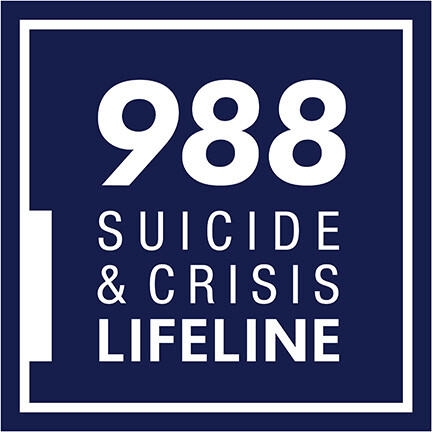
With the rollout of the new 988 Suicide and Crisis Lifeline on July 16, the United States is moving toward a more cohesive and comprehensive behavioral health crisis response.
The new three-digit 988 — modeled after 911 — is replacing the 10-digit suicide hotline number for 24/7 crisis care by voice, chat or text. While the adoption of the new number is happening simultaneously across the country, each state has been tasked with preparing its call centers and infrastructure for the switch.
In Nebraska, officials with the Department of Health and Human Services’ Division of Behavioral Health; Boys Town, which has overseen the state’s call center for the suicide crisis line since 2005; and the University of Nebraska Public Policy Center, among others, have been working since January 2021 to prepare for the transition.
Denise Bulling, senior research director with the Public Policy Center, said she and Stacey Hoffman, senior research manager, along with other staff at the center, were tasked with helping the state examine its current behavioral health care workforce; developing some recommendations on building out mobile crisis teams; and gathering data and input from various stakeholders, including people who have experienced a mental health crisis, practitioners and first responders.
“The state has been in charge of the planning effort, along with Boys Town, and our role is to support their efforts and to ensure that what they’re doing is data-driven, based on the best science,” Bulling said. “We’re helping to ensure we hear all the stakeholder voices, assisting with monitoring where we’re at in implementation and serving as an extender of the state resources, as we navigate this system change. To put this in perspective, when they introduced 911, it took 40 years to fully develop that system. We’ve been planning for 988 for a year, so there’s a lot happening all at once.”

With the transition to 988 currently taking place, the state of Nebraska is also implementing mobile crisis teams, which will respond to 988 calls when needed. These teams will include trained mental health professionals and be deployed in different media, with both in-person contacts and remote contacts. Bulling said center staff are working with the state to ensure equitable services are available to everyone in a state with sparsely populated areas.
“There’s a tremendous effort occurring in the state right now to ensure that every area of the state has access, that someone is available to respond — that’s the vision,” Bulling said. “We want to make sure we have the capabilities around the state to respond through in-person or virtual connections.”
The 988 number is also incorporating more services, beyond the original suicide lifeline’s mission. The 988 number will handle more behavioral health crises and will link up to the Veteran Crisis Line. State officials expect this will increase the volume of calls and require more trained professionals in the call center.
Kyle Kinney, program manager at Boys Town, spoke at a news conference July 15 about the call center’s work and shared that even before the 988 announcement, the call center was seeing an influx of calls.
“In 2021, we had 8,777 lifeline calls from Nebraskans, and of that, 97.1% were de-escalated without requiring external emergency intervention,” Kinney said. “In June 2022, we received 1,073 calls to the lifeline from fellow Nebraskans, and our call volume is up 16% over the same time period in 2021.”
The Boys Town call center took 1,240 calls in July.
Bulling said Hoffman will be integral in monitoring and collecting data on the number and type of calls, to make data-driven recommendations on workforce needs throughout the state.
“There are key performance indicators that all call centers must monitor,” Bulling said. “Some of those indicators are the percent of calls answered, wait or hold times, the number that are rolled over to the national backup call center.
“We’re also going to be looking at the types of calls that are coming into the center, how many are being referred to the mobile crisis teams and the follow-up that occurs. The state will be able to make adjustments based on the data and stakeholder voices, which we’ll continue to gather.”







